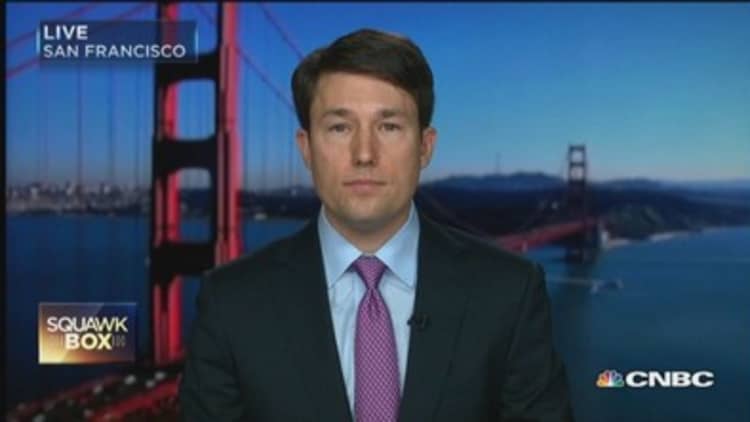The value of a discretionary item rests in the eye of the beholder—particularly in the high-end luxury market, where price tags rely more on a shopper's aspirations than on the product's actual worth.
As a result, luxury brands including Hermes and Louis Vuitton have been marking up prices over the past few years, as rising stock markets, improving home values and an overall stronger economy make the rich even richer.
But are high-end brands in danger of alienating wealthy shoppers, who are increasingly spending their fortunes on experience-driven purchases such as travel?
According to research by the Boston Consulting Group, between 2002 and 2012, median luxury handbag prices for seven brands increased at an annual rate of 14 percent, significantly outpacing the overall inflation growth rate of 2.5 percent.
Meanwhile, sales growth of personal luxury goods is trailing that of other high-end categories, with Boston Consulting forecasting a slowdown in growth over the next three years.
Read MoreMillennials redefine luxury—and the stakes are high
That slowdown has been especially noticeable in China, where a study by Bain & Company found the luxury goods market is contracting for the first time—a result of the government crackdown on luxury gift giving.
"Prices for luxury brands ... have just skyrocketed since the recession," said Pam Danziger, president of Unity Marketing consulting firm. "I don't know that they haven't reached a tipping point."
Chanel, Tag Heuer lead the way
Earlier this week, luxury brands Chanel and Tag Heuer became the latest labels to tweak their pricing—changes they attributed to currency fluctuations. On Tuesday, Chanel said because of the depreciating euro, it will raise prices in Europe and trim them in Asia, to "offer our products to all of our customers at a harmonized price."
Hours later Tag Heuer announced that because of the Swiss franc's appreciation, it would keep prices flat in the euro zone, Japan and Singapore, but lower them in places including the United States, South America and the U.K.
"This will be an effective way to preserve and develop the quality and uniqueness of Chanel customers' experience in the boutiques," the company said. "It is also intended to fight against the parallel resale markets, which benefit from current price differentials and jeopardize the business, the image and the exclusivity of Chanel."
Read MoreWhat not to wear: Most out of style fashion stocks
Hana Ben-Shabat, a partner in the retail practice of A.T. Kearney, agreed that Chanel's move will likely cut back on the gray market—a term that includes people who buy products in bulk in a cheaper geography, and then resell them for a higher price.
But because higher prices in the U.S. and China are nothing new, the move could be designed more as a means to kickstart sales in China, where the recent slowdown in luxury spending may have been the tipping point.
"Things are so expensive and you don't have gifting anymore, [so] reducing the prices in China makes sense if you want to re-energize the market," Ben-Shabat said.

Danziger, however, expressed doubts about the strategy, saying companies are at risk of alienating customers.
"We've always had currency fluctuation," she said. "Trying to manipulate it on the back end, I don't know that that ultimately isn't going to backfire."
What's more, resale sites including The Real Real make it easier than ever for shoppers to score authentic designer goods at a lower price, potentially discouraging them from shelling out big bucks on the latest fashions.
Read MoreOn front row at Lincoln Center's final Fashion Week
"If I were in [luxury brands'] position, I'd be very cautious about raising prices," she said.
Luxury companies use price hikes as a means to grow sales, since only a small percentage of shoppers can afford their products. But they aren't always effective. British firm Mulberry, which in 2012 increased prices on its handbags to make the brand more exclusive, reneged on this about a year later, after its sales and share price took a tumble.
Powerhouse luxury firms Prada; Kering, which owns brands including Gucci and Saint Laurent; and LVMH, Louis Vuitton's parent, declined to comment on whether they plan to mimic the price increases. Other luxury brands contacted by CNBC did not immediately respond to a request for comment.
What's behind the slowdown
There are other headwinds as well. According to research by Bain & Company, growth in personal luxury goods trailed categories focused more on travel and lifestyle last year, as shoppers shifted their spending to other categories.
Whereas total luxury spending rose an estimated 7 percent, sales of personal luxury goods rose a modest 2 percent. By comparison, luxury car sales jumped 10 percent, and the luxury hotelier category increased 9 percent.
Read MoreThe biggest threat to luxury brands' rapid growth
Boston Consulting's Sarah Willersdorf said she expects the size and growth rate for the personal luxury goods market—which includes apparel, accessories, watches and jewelry, and perfume and cosmetics—to slow down, though they will still outperform global gross domestic product by about two points.
After growing at an average annual rate of 11 percent from 2010 to 2013, growth should be about 5 to 6 percent a year over the next three years, the firm said. In 2014, the personal luxury goods market was worth 290 billion euros ($309.4 billion), the firm said.
In addition to price hikes and currency woes, geopolitical issues, struggles in the European economy and China's stringent rules are all expected to hinder the market's growth.
"Things are just not good [in the global economy]," Danziger said. "I don't care what people are saying and how they're spinning it."


